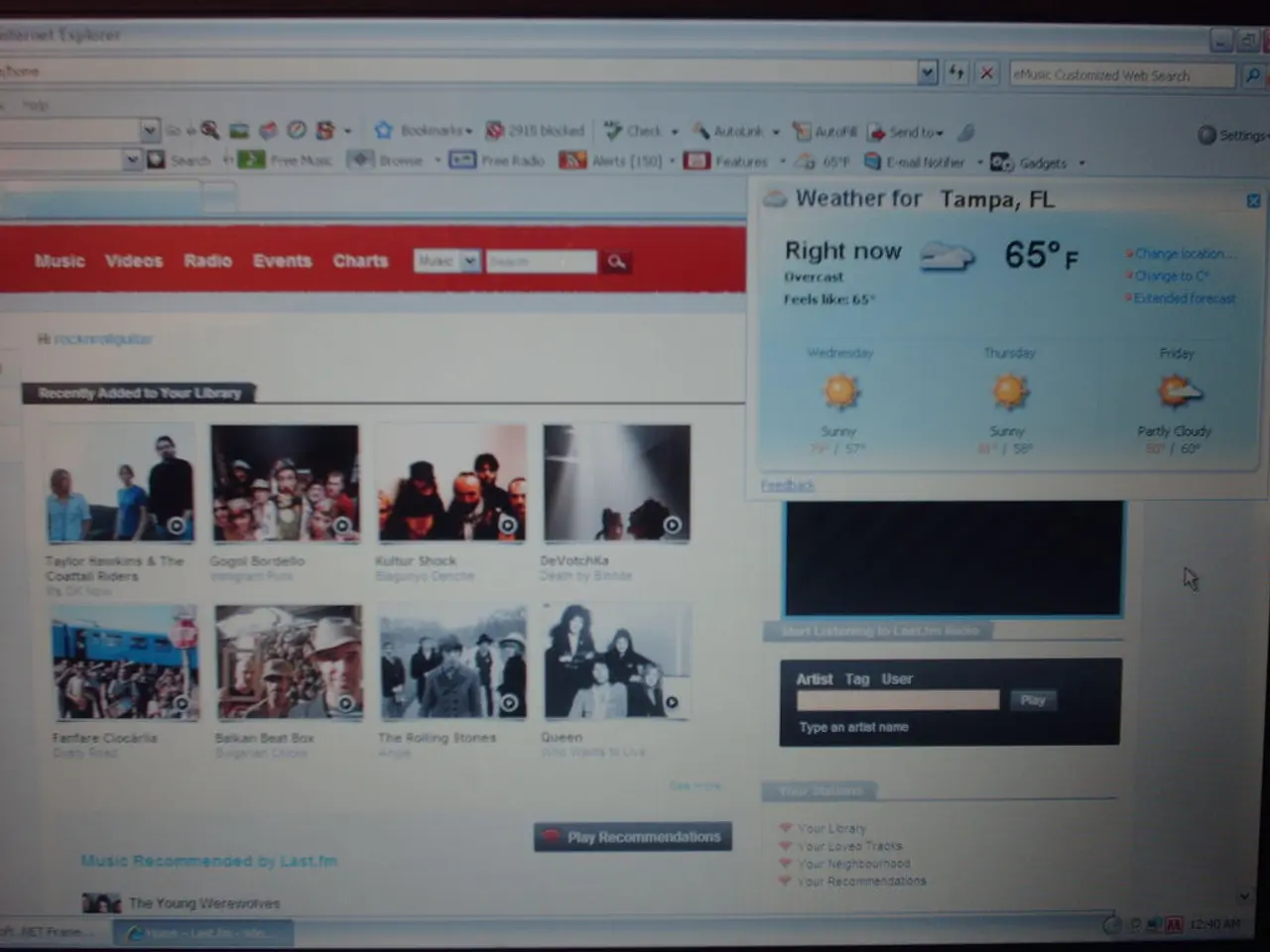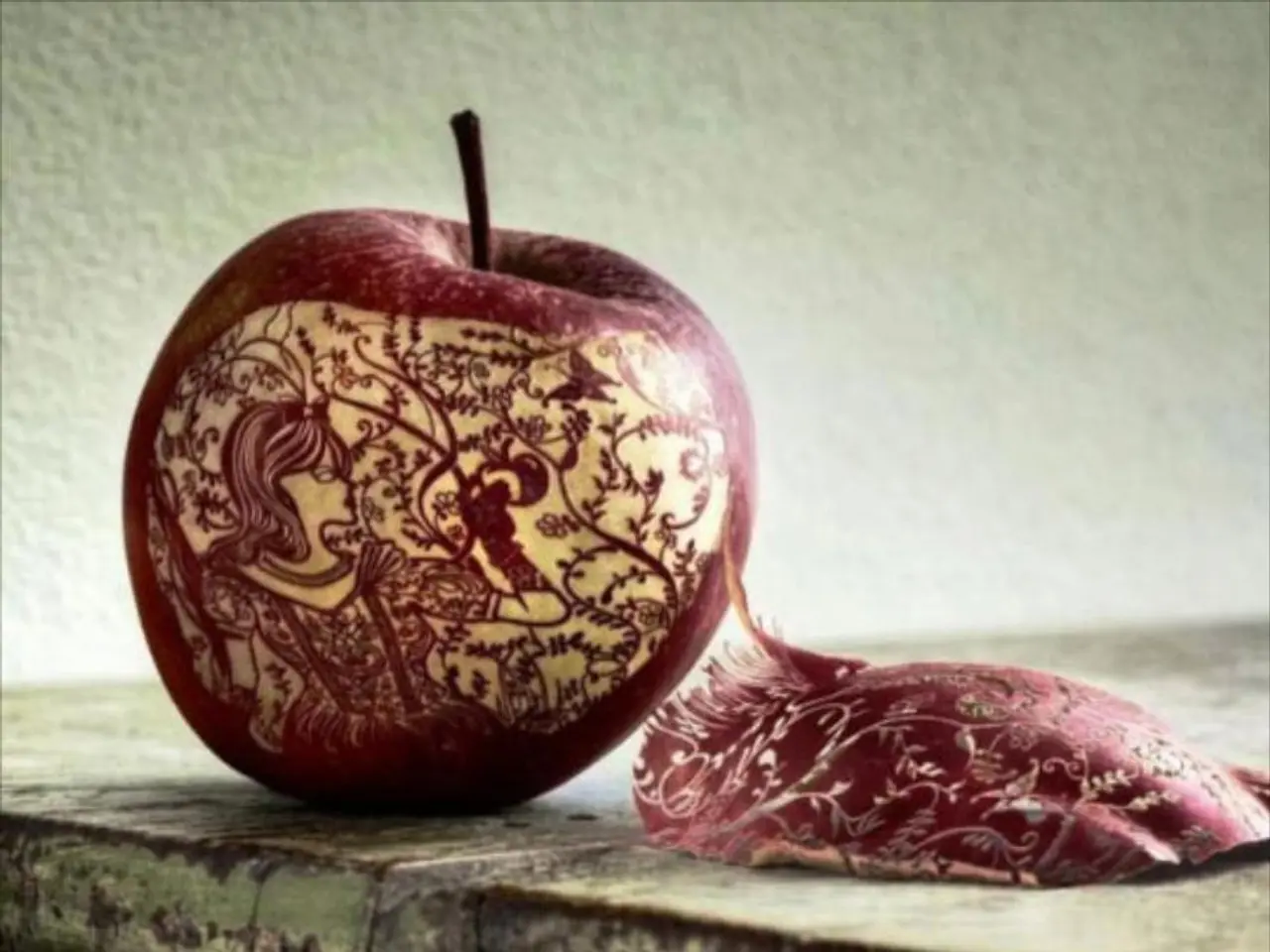Revisiting Yesteryear's Digital Wonders: The Persistent Fascination with Antique Computing Hardware at Events
In the world of technology, where advancements are made at a breakneck pace, it's easy to forget the humble beginnings of personal computing. However, a group of enthusiasts, including Jason Moore and Levi Maaia, are keeping the spirit of vintage computers alive.
Jason Moore, a seasoned collector with over 25 years of experience, has amassed a collection that spans Amiga, Commodore, Apple, Radio Shack TRS-80s, and Texas Instruments machines. His fascination with vintage computers led him to exhibit at the SoCal Vintage Computer Festival.
Meanwhile, Levi Maaia, another exhibitor, rediscovered an Apple IIGS computer that his mother brought home in the late '80s. After being stored in the basement for 30 years, the Apple IIGS was transported from the East Coast to Maaia's home on the West Coast. Despite technology advancing too far to continue using the Apple IIGS by 1994, Maaia and his family upgraded it and added hard drives to extend its lifespan.
The Apple IIGS is just one example of the pioneering personal computers that laid the foundation for portable computing design, innovation in hardware, and user expectations. While a direct list of the 15 vintage PCs that significantly influenced how we think about laptops today may not be available, we can curate a list based on their impact:
- IBM PC 5150 (1981): The original IBM PC started the standard architecture that many portables later adapted.
- Osborne 1 (1981): Often credited as the first commercially successful portable computer.
- Compaq Portable (1983): The first portable PC compatible with IBM’s architecture.
- Apple Macintosh Portable (1989): Apple’s early attempt at a battery-powered Macintosh.
- GRiD Compass 1101 (1982): Considered the first clamshell laptop design and a pioneer in modern laptop form factor.
- Tandy Model 100 (1983): An early lightweight portable with an LCD, influencing mobile computing.
- Commodore SX-64 (1984): The first full-color portable Commodore computer, with features for portability.
- Sharp PC-5000 (1983): One of the first laptops with a full-sized keyboard and small CRT display.
- IBM PC Convertible (1986): IBM's first laptop, introducing battery operation and LCD screen.
- Apple PowerBook 100 (1991): Set modern laptop keyboard and trackball placement standards.
- Toshiba T1100 (1985): Among the first mass-market laptops with a built-in floppy drive.
- Kaypro II (1982): A portable CP/M system that influenced early mobile productivity.
- Zenith SupersPort (1989): Popular among business users for portability and IBM compatibility.
- ACT Apricot Portable (1984): Early attempt at portable computing with integrated features.
- HP Omnibook 300 (1993): Early ultraportable design influencing modern thin-and-light laptops.
Events like the Vintage Computer Festival highlight historically critical machines, and groups like the Homebrew Computer Club fostered development and sharing of ideas that ultimately influenced early laptop and desktop PC design.
While machines like the Commodore 64 were major in home computing, they did not directly influence laptops’ portable design. However, their accessibility helped shape computer culture. Modern products such as Dell XPS or Apple’s current MacBooks build on these foundational innovations.
In the realm of education, Anna Atkeson, the executive director of the Paul Gray Personal Computing Museum at Claremont Graduate University in California, notices a difference in her digital art students who rely on search functions instead of understanding file trees due to their familiarity with modern computers. This realization highlights the shift in user interaction over the years.
Maaia's rediscovery of the Apple IIGS has led him to appreciate the understanding of the entire system that vintage software was designed with, unlike modern software. Jason Moore emphasizes that computers from 40 years ago could be controlled and understood at a hardware level, unlike modern computers with integrated chips.
Atkeson, who originally wanted to pursue a career creating art for video games but switched her focus to museum studies, found herself working at the Paul Gray PCM after realizing its focus on vintage computers was "kind of awesome." Moore's love of computers began with an Atari 400, which his parents bought him in the seventh grade.
As we move forward in the digital age, it's essential to remember and appreciate the pioneering efforts that have shaped our current technology landscape. The stories of collectors like Moore and Maaia, and institutions like the Paul Gray PCM, serve as a reminder of the rich history of personal computing.
- The world of technology, with its rapid advancements, often overshadows the humble beginnings of personal computing.
- Jason Moore, a seasoned collector, has curated a collection spanning various vintage computers, including Amiga, Commodore, Apple, Radio Shack TRS-80s, and Texas Instruments machines.
- Moore's fascination with vintage computers led him to exhibit at the SoCal Vintage Computer Festival.
- Levi Maaia rediscovered an Apple IIGS computer, which his mother brought home in the late '80s, and extended its lifespan by upgrading it and adding hard drives.
- The Apple IIGS, like many other pioneering personal computers, played a significant role in shaping portable computing design, innovation in hardware, and user expectations.
- Some vintage PCs that significantly influenced how we think about laptops today include the IBM PC 5150, Osborne 1, Compaq Portable, Apple Macintosh Portable, GRiD Compass 1101, Tandy Model 100, Commodore SX-64, Sharp PC-5000, IBM PC Convertible, Apple PowerBook 100, Toshiba T1100, Kaypro II, Zenith SupersPort, ACT Apricot Portable, and HP Omnibook 300.
- Events such as the Vintage Computer Festival and groups like the Homebrew Computer Club were instrumental in fostering development and sharing ideas that ultimately influenced early laptop and desktop PC design.




